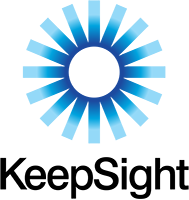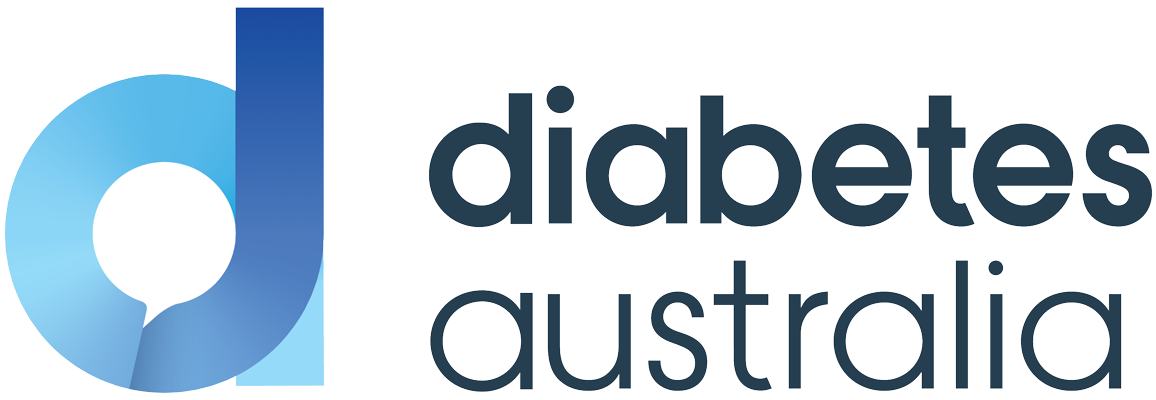For health professionals
KeepSight is a new program designed to increase the number of people with diabetes undergoing regular comprehensive eye examinationsFor eye care professionals
Optometrists, orthoptists, ophthalmologists, Aboriginal health workers, and GPs who do Diabetic Retinopathy (DR) screening are really important for the KeepSight program.
By registering as a KeepSight provider, then registering people with diabetes and recording eye check results, we can ensure people are getting the right eye care, at the right time.
Importantly, by understanding how many people are engaged in their eye care, we can also understand which people, registered on the National Diabetes Services Scheme, are not currently having eye checks.
Diabetes Australia targets those people not getting recommended checks and encourages them to book with a KeepSight provider.
-
Register as a
Provider
-
Conduct Eye
Checks
-
Record
a Visit
Register as a KeepSight healthcare provider today
For diabetes care professionals
Endocrinologists, diabetologists, diabetes educators, Aboriginal health workers, nurses and GPs who get eye reports from optometrists and ophthalmologists can make sure they are recorded in KeepSight so that patients who are overdue for eye examinations get reminders.
KeepSight is designed to complement and reinforce the ongoing care you provide to your patients.
-
Register as a
Provider
-
Record
a Visit
-
Refer to
Eye Specialist
Register as a KeepSight healthcare provider today
FAQs for healthcare professionals
- How does KeepSight work?
- How do I register a patient with KeepSight?
- Why should I participate?
- Will the person receiving the reminder to have an eye exam be able to choose their eye health professional?
- I already have my own recall and reminder systems in place to make sure people get their eyes checked regularly. How will this program add value?
- Is the KeepSight website secure? What privacy measures are in place?
- Will the eye health sector be required to sign up to the Oculo or Optomate platform?
- Will the KeepSight portal integrate with the MyHealth Record (MHR)?
- Who will have access to my patient's information?
- Most of my patients are Aboriginal or Torres Strait Islander people. How can KeepSight help them?
How does KeepSight work?
For eye care providers who currently use OculoOpens in new window or OptomateOpens in new window, there will be a streamlined process within Oculo and Optomate to register patients with KeepSight.
For eye health and diabetes care professionals who do not use Oculo or Optomate, they can access KeepSight through this website. Eye health professionals will be able to register people to receive recall, and reminder notices and create digital eye health records.
When a person with diabetes presents for an eye examination, eye care professionals are encouraged to register the patient with KeepSight and record the details of their eye check, if the patient consents to participate in KeepSight. As part of registering, patients will also be asked for their consent to participate in KeepSight.
This information will be used to trigger recall and reminder notices and encourage people to have future eye examinations within the timeframe recommended by the health provider. This will supplement existing recall and reminder systems within eye care practices.
Diabetes health professionals are also encouraged to register patients with KeepSight. Health professionals who receive eye exam reports from Optometrists and Ophthalmologists can make sure these details are recorded in KeepSight to ensure their patient receives a reminder when their next eye check is due.
How do I register a patient with KeepSight?
To register a patient, you will need to be registered as a health care provider on Keepsight.
When you see a person with diabetes ask them if they’d like to be registered with KeepSight.
If they consent, register your patient’s details with the secure KeepSight web portal. You’ll need to record the person’s name, their National Diabetes Services Scheme (NDSS) number, as well as information about the eye check provided and when they will need a follow up eye check. If they don’t have their NDSS number, or aren’t registered with the NDSS, please call 1800 637 700.
This information will be used to trigger future recall and reminder notices to encourage the person to schedule future eye examinations within the recommended timeframes.
Why should I participate?
KeepSight presents a once-in-a-generation opportunity to significantly boost the number of eye examinations for people with diabetes and in doing so, reduce the number of people who lose their sight.
For eye health professionals, by registering to be involved, it will be easier for people with diabetes who do not currently have regular eye checks, to find you. Once you and your patients are registered with the KeepSight program, the recall and reminder notices you send to your patients will be supplemented by reminders from Diabetes Australia.
For diabetes care professionals and GPs, registering the last date of your patient’s diabetes eye check in KeepSight means they will receive regular reminders to look after their eyes.
Will the person receiving the reminder to have an eye exam be able to choose their eye health professional?
Yes. People who receive a reminder letter will always be directed to see the eye health professional from their previous visit or practice of their choice. The KeepSight program is not intended to disrupt existing arrangements between eye health professionals and their patients, but supplement these with an additional recall and reminder system via Diabetes Australia. For those people who do not receive regular eye care, a link to eye care providers is available on the KeepSight website.
I already have my own recall and reminder systems in place to make sure people get their eyes checked regularly. How will this program add value?
This program will encourage people with diabetes in Australia who currently aren’t accessing regular eye examinations to visit an eye care provider.
Once a patient’s eye examination results have been recorded in the KeepSight portal, this will trigger recall and reminder notices to encourage them to have future eye examinations within the timeframe recommended by their eye care provider. This will supplement the existing recall and reminder systems within eye care practices.
KeepSight reminders enhance existing practice reminders with diabetes specific follow up.
Is the KeepSight website secure? What privacy measures are in place?
KeepSight uses industry best pratices to safeguard data security and patient privacy. The KeepSight digital platform complies with all Australian federal and state requirements.
Will the eye health sector be required to sign up to the Oculo or Optomate platform?
No. There will be no requirement to sign up to the OculoOpens in new window or OptomateOpens in new window platform. Eye care providers who do not currently use Oculo or Optomate can register their patients with KeepSight through this freely available website.
Optometrists who already use Oculo or Optomate will not need to register with the public portal. There will be a streamlined process within the existing Oculo or Optomate software to send information to KeepSight.
Will the KeepSight portal integrate with the MyHealth Record (MHR)?
KeepSight integrates with the NDSS, which currently does not integrate with MyHealth Record. As the systems develop over the coming years, integration may become possible.
Who will see my patient's information?
Patient information will be used by KeepSight and Diabetes Australia to remind the patient when eye examinations are due in the future.
The information is not available to any others. If the patient consents, the patient’s de-personalised information can be used by researchers interested in improving care for people with diabetes.
Most of my patients are Aboriginal or Torres Strait Islander people. How can KeepSight help them?
Aboriginal and Torres Strait Islander people are almost four times more likely than non-Indigenous Australians to have diabetes or pre-diabetes and nearly five times more likely to experience diabetic retinopathy.
That’s why regular eye checks and good diabetes management are especially important for First Nations people.
You can sign up your patients for regular KeepSight eye check reminders and encourage them to have a free diabetes eye check as part of their 715 appointment.
It’s also good to encourage First Nations patients to:
- keep their blood sugar HbA1c, blood pressure and cholesterol in a health range;
- think about giving up smoking;
- keep active and eat good tucker;
- always take medicines and keep up health checks
All of our First Nations health promotion material features the artwork of Keisha Leon.
Keisha is a graphic designer, artist and a proud Waanyi–Kalkadoon (Mount Isa, Queensland) and Chinese woman. The artwork story considers the impact of diabetes on communities and the barriers preventing people from accessing health care.
It shows the positive journey of increased awareness, connection and support First Nation’s people can take towards a healthier future.

Unhealthy communities
Communities that are affected by diabetes, but do not yet have the awareness to positively mobilise their health.

Barriers to health
When starting the pathway to healthier communities, Indigenous people face many barriers, some including lack of awareness, fear and fatalism.

Indigenous People
The pathway is guided and created by the resilient nature of Indigenous people. We can only work towards a healthy community when we work together.

Awareness & Understanding
The first step on the journey is to yarn about diabetes, opening up to greater awareness and understanding about the disease.

Support People
By yarning and connecting with support services (like Diabetes Australia), family and community, we move towards building healthier communities.

Greater Understanding
With greater understanding, we can start to take control of our own health and positively influence the community.

Greater Understanding
By connecting to people and opening up the conversation about diabetes, we grow and connect healthier communities that thrive.

Healthier Living
The outcome is healthier communities, as well as living lives with greater awareness, managing our health better, and setting up healthier lives for the future generations.
For more information on how to partner with KeepSight to address diabetes vision loss in your Aboriginal health practice, contact [email protected]


